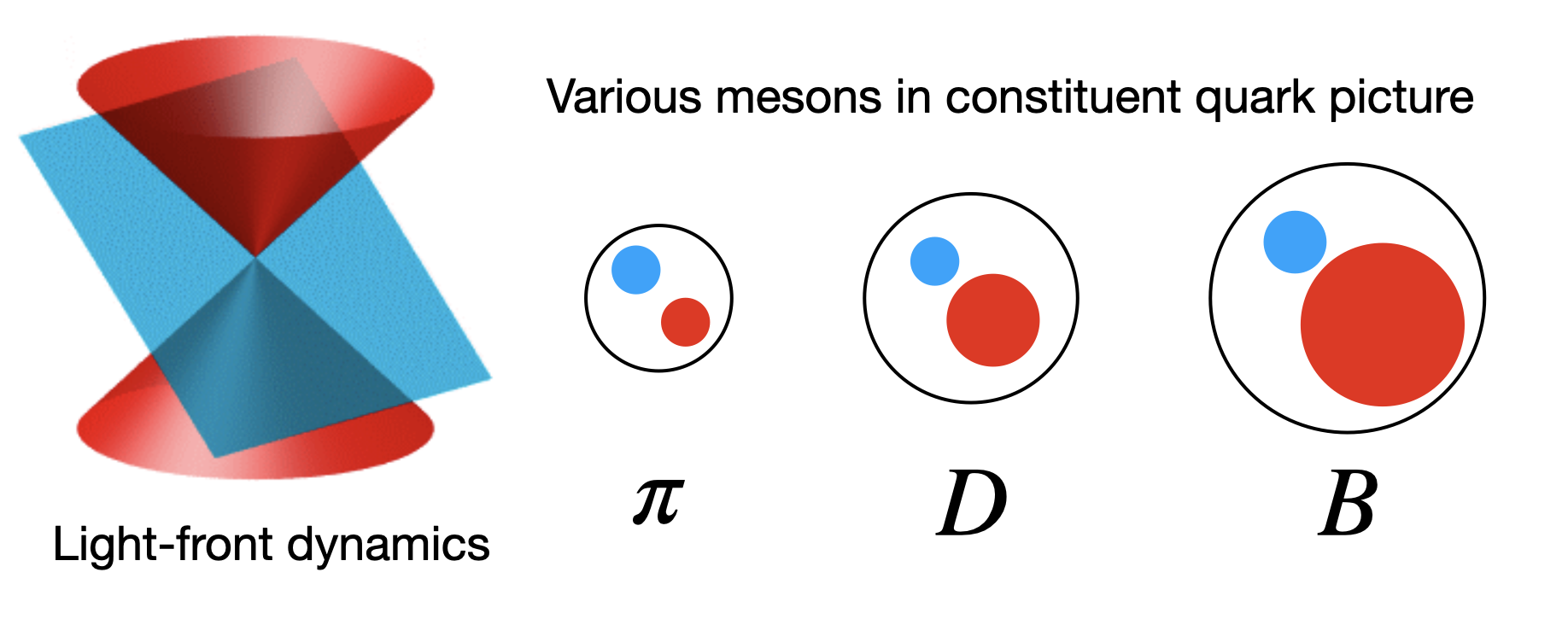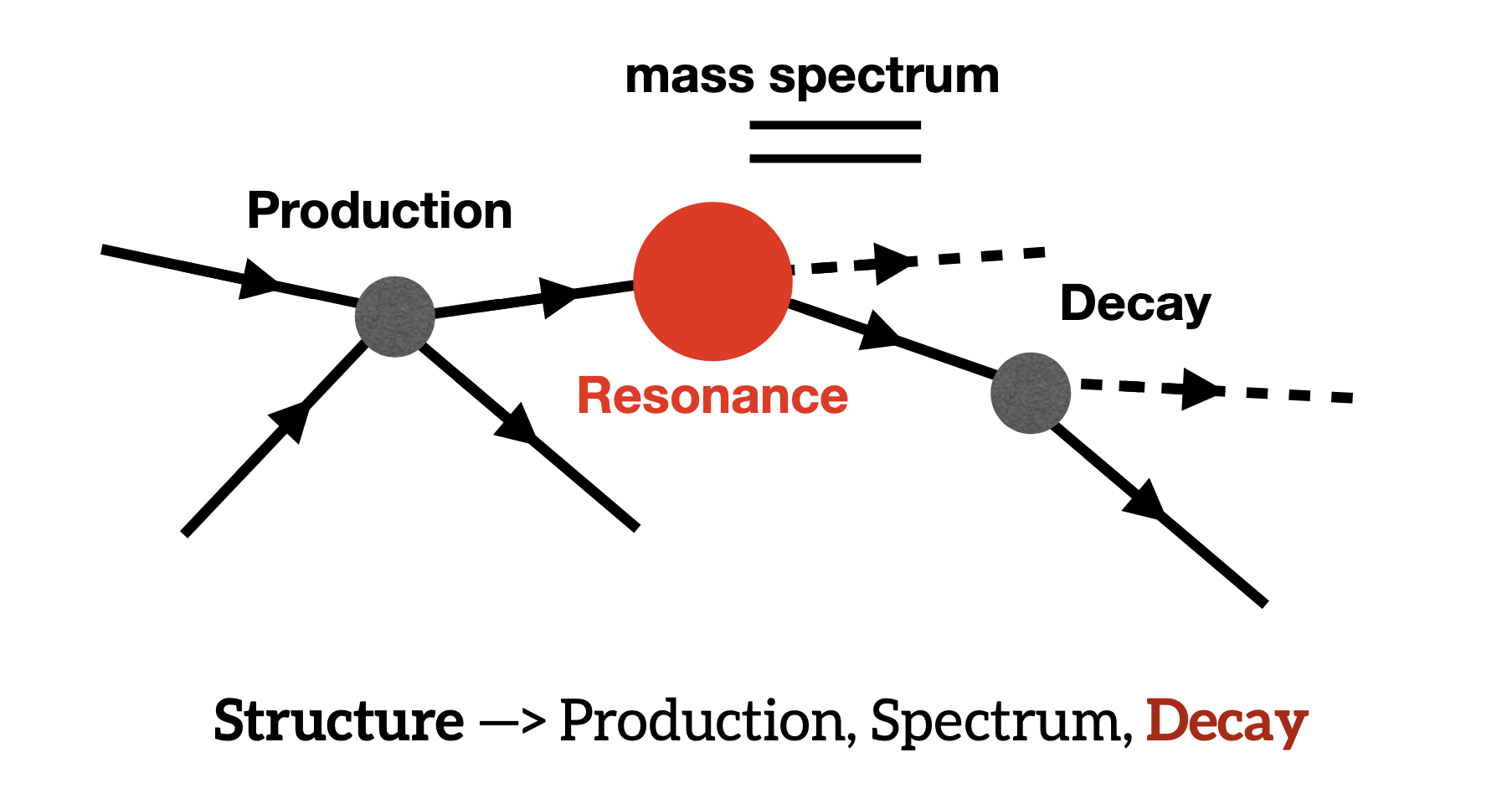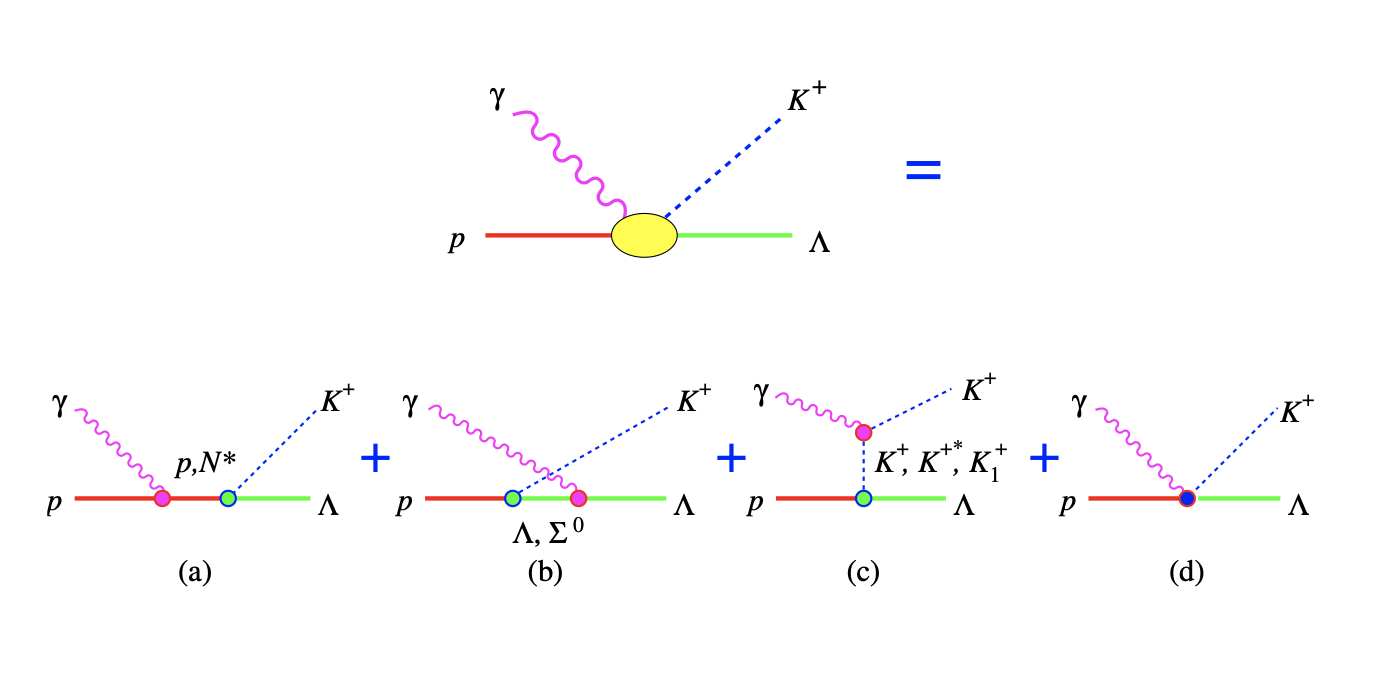QCD and light-front quark model
 A. J. Arifi
A. J. Arifi (2021-present) 
 A. J. Arifi
A. J. Arifi (2021-present) 
 A. J. Arifi
A. J. Arifi (2015-present) 
 A. J. Arifi
A. J. Arifi
(2013-2015) 
T. Mart, S. Clymton, and A. J. Arifi, Phys. Rev. D92 094019 (2015).
A. J. Arifi, H. Nagahiro, and A. Hosaka, Phys Rev D95 114018 (2017)
Two-pion emission decay of Roper-like heavy baryons, Few-Body Systems 62, 36 (2021).
Speaker: Denny Lane B. Sombillo (RCNP & University of the Philippines)
Date & time: 11am KST, May 27, 2021
Place: Online (Zoom)
Speaker: Keval M. Gandhi (Sardar Vallabhbhai National Institute of Technology)
Date & time: 2pm KST, June 29, 2021
Place: Online (Zoom)
According to latest Review of Particle Physics (RPP) by Particle Data Group (PDG), the spin-parity of excited open-charm mesons D(2550), DJ(2600), D(2640), D(2740), D3(2750), DJ(3000), DJ(3000), D2(3000), Ds1(2536), Ds1(2860), Ds3(2860) and DsJ(3040) are not yet confirmed from the known experimental measurements. It is crucial to assign the spin-parity of hadrons which facilitate the determination of properties such as decay width, branching fraction, isospin mass splitting, polarization amplitude, etc. Theoretically, there is much possible interpretation of these open-charm mesons. Here we apply the heavy quark effective theory (HQET) in the leading order approximation to calculate the strong decay of experimentally seen open-charm mesons. The ratio of the branching fraction measurement of strong decay modes can help to classify the decaying meson. Experimental information in the bottom sector is limited. Due to large non-resonant continuum contributions, however, experimentally the broad resonance states are difficult to identify. We shall calculate the masses and strong decay behavior of excited bottom mesons in the framework of HQET. The flavor symmetry of heavy quark explore the flavor independent parameters ΔF(c)= ΔF(b) and λF(c) = λF(b) to calculate the masses of excited open-bottom mesons. This study may raise many possibilities in the decisions of the experimentally missing open-bottom mesons. Additionally, our spin-parity assignment of experimentally observed open-charm mesons may allow us to construct the Regge trajectories in (M2,J) and (M2,nr) planes, where J is the total-spin, nr is the radial principal quantum number, and M2 is the square of the meson mass. That can estimate the masses of experimentally missing states lying on these Regge lines. Their ratio of the strong decay rates may guide future experimental studies to find them in fundamental decay modes.
Speaker: Apriadi Salim Adam (Indonesian Institute of Science (LIPI), Indonesia)
Date & time: 3pm KST, Aug 25, 2021
Place: Online (Zoom)
We derive a formulation of the time evolution of the lepton family number (LFN) for a neutrino that forms an SU(2) doublet with a charged lepton. The LFN is defined through a weak basis of the SU(2) doublet, where the charged lepton mass matrix is real and diagonal. The LFN carried by the neutrino is defined by the left-handed current of the neutrino family. In the first part of the talk, I will consider the case that the neutrinos are Majorana type. The Majorana mass term is switched on at $t=0$ and the LFN evolves. Then, we compute the time evolution of LFN by choosing a specific initial flavor eigenstate for a neutrino. In this work, we study both relativistic and non-relativistic neutrinos. The non-relativistic region is of particular interest for the cosmic neutrino background predicted from Big Bang Models. In that region, we find the LFNs are sensitive to the Majorana and Dirac phases, the absolute mass, and the mass hierarchy of neutrinos. In the second part of the talk, I will consider the Dirac type of neutrinos following the same procedure as the Majorana type.
Speaker: Natsumi Ikeno (Tottori U, Japan)
Date & time: 2pm KST, Sep 28, 2021
Place: Online (Zoom)
We study the $\Omega(2012)$ which was measured in the Belle experiment. We conduct a study of the interaction of the $\bar{K}\Xi^\ast$, $\eta\Omega$(s-wave) and $\bar{K}\Xi$(d-wave) channels within a coupled channel unitary approach. We find that all data including the Belle experiment on the ratio of the decay width $\Gamma(\Omega^\ast\rightarrow\pi\bar{K}\Xi)/\Gamma(\Omega^\ast\rightarrow\bar{K}\Xi)$ are compatible with the molecular picture stemming from meson baryon interaction of these channels. In this talk, I report the results based on Ref. [1].
Reference:
[1] N. Ikeno, G. Toledo, and E. Oset, Phys. Rev. D 101, 094016 (2020).
Speaker: Daris Samart (Khon Kaen U, Korea)
Date & time: 3 pm KST, Oct 19, 2021
Place: Online (Zoom)
In this talk, we will first briefly review the mechanism of the triangle singularity in hadronic scattering processes. Then, the resonance of the $N^∗(1875)(3/2^-)$ with a coupled-channel unitary approach is studied by considering the $\Delta\pi$ and $\Sigma^* K$, with their interaction extracted from chiral Lagrangians. In addition, two more channels, the $N^∗(1535)\pi$ and $N\sigma$ are taken into account via triangle diagrams involving the $\Sigma^* K$ and $\Delta\pi$ respectively in the intermediate states. As results, the triangle diagram in the $N^*(1535)\pi$ case develops a singularity at the same energy as the resonance mass. We determined the couplings of the resonance to the different channels and the partial decay widths. We found a very large decay width to $\Sigma^* K$ and observed that, due to interference with other terms, the Nσ channel has an important role in the ππ mass distributions at low invariant masses, leading to an apparently large $N\sigma$ decay width. Finally, we discuss justifying the convenience of an experimental reanalysis of this resonance using coupled-channel unitary schemes.
Reference:
[1] D. Samart, W. H. Liang and E. Oset, Phys. Rev. C96, 035202 (2017).
Speaker: Daiki Suenaga (RIKEN, Japan)
Date & time: 2 pm KST, June 23, 2022
Place: Online (Zoom)
Chiral symmetry is one of the most important symmetries in QCD. In fact, the symmetry enables us to understand the properties (mass spectrum, decay width, etc.) of hadrons having light quarks in a field-theoretically systematic way. In this talk, I review recent development of study of heavy hadrons from the chiral models, showing comparisons with the quark model investigations. Besides, I explain my recent research on the Roper-like singly heavy baryons from a chiral model approach.
Speaker: Meijian Li (University Santiago de Compostela, Spain)
Date & time: 4 pm KST, July 26, 2022
Place: Online (Zoom)
We develop a mechanism to build the light-front wavefunctions (LFWFs) of meson bound states on a small-sized basis function representation. Unlike in a standard Hamiltonian formalism, the Hamiltonian in this method is implicit, and the information of the system is carried directly by the functional form and adjustable parameters of the LFWFs. In this work, we model the LFWFs for four charmonium states, $\eta_c$, $J/\psi$, $\psi^\prime$, and $\psi(3770)$ as superpositions of orthonormal basis functions. We choose the basis functions as eigenfunctions of an effective Hamiltonian, which has a longitudinal confining potential in addition to the transverse confining potential from light-front holographic QCD. We determine the basis function parameters and superposition coefficients by employing both guidance from the nonrelativistic description of the meson states and the experimental measurements of the meson decay widths. With the obtained wavefunctions, we study the features of those meson states, including charge radii and parton distribution functions. We use the $J/\psi$ LFWF to calculate the meson production in diffractive deep inelastic scattering and ultra-peripheral heavy-ion collisions, and the $\eta_c$ LFWF to calculate its diphoton transition form factor. Both results show good agreement with experiments. The obtained LFWFs have simple-functional forms and can be readily used to predict additional experimental observables.
Speaker: Yongwoo Choi (Inha University, Korea)
Date & time: 11 am KST, September 21, 2022
Place: Online (Zoom)
To probe point-like particles inside nucleon, an incident lepton with extremely high energy is required. It can be described by the fast-moving target frame, namely the infinite momentum frame. Since the equivalence between the infinite momentum frame and light-front dynamics is well known, the light-front dynamics play a significant role in understanding the hadron structure. Especially, the twist expansion is well defined on the light-front coordinates, and light-front time-ordered amplitudes are invariant under the z-direction Lorentz boost, which provides the Fock space expansion with a trivial vacuum.
Speaker: Zulkaida Akbar (Virginia University, USA)
Date & time: 10.30 am KST, October 17, 2022
Place: Online (Zoom)
The spin structure of the nucleon has been of particular interest since the EMC measurements, which showed that the helicity of the constituent quarks account for only a fraction of the nucleon spin. How quarks and gluons assemble into a spin-1/2 proton is still a mystery. An intense experimental effort has been dedicated to reveal the structure of nucleons in terms of partonic degrees of freedom, which allows to understand the partonic decomposition of the nucleon spin and probe the 3D structure of the nucleon. These information are encoded in Generalized Parton Distributions (GPDs) and Transverse Momentum Distributions (TMDs).